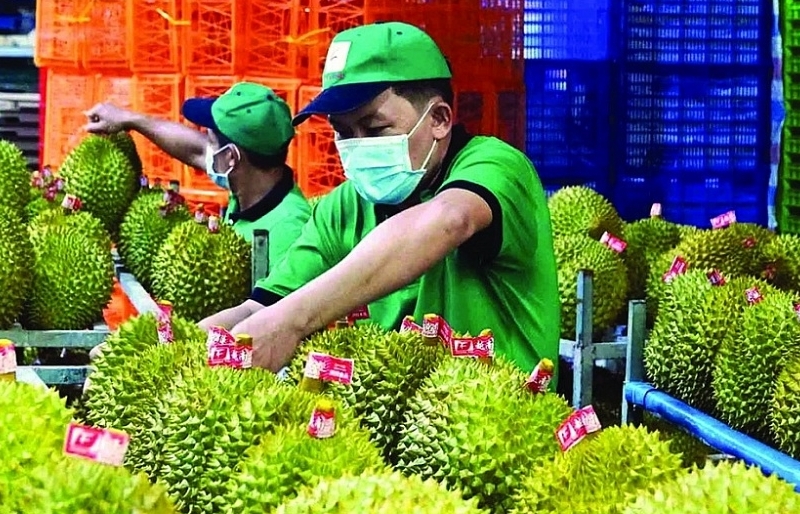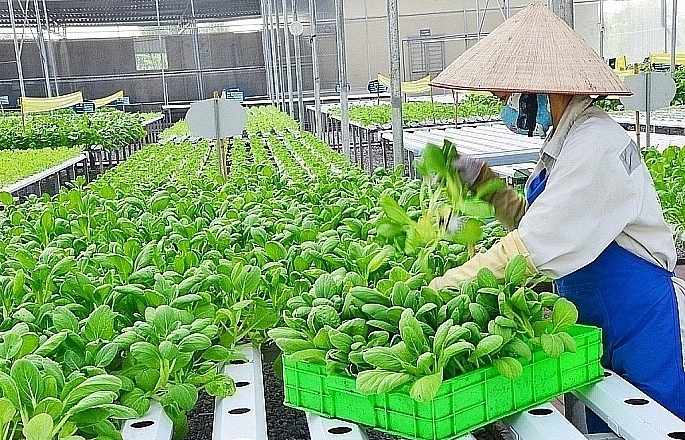Double-digit growth thanks to businesses with unique path in manufacturing and exporting
| Vietnam emerges as a major motorcycle market and manufacturing hub | |
| How to develop a Make in Vietnam digital technology business? |
 |
| Mr. Nguyen Dang Hien, CEO of Bidrico |
Being one of the leading beverage manufacturers in Vietnam that has exported to 14 countries with the strictest global standards, what direction is Bidrico taking to maintain its double-digit growth, sir?
While most industries, including the food sector, face numerous challenges in both the domestic and international markets due to increased input costs, Bidrico has also been impacted by these effects. However, we have chosen a different approach to increase our market share and sustain growth. The two main factors driving Bidrico's revenue growth are manufacturing and exporting. These two areas have shown significant growth and have contributed significantly to the company's revenue. In the first six months of 2023, Bidrico achieved a growth of over 24% compared to the same period in 2022, and this July, the growth rate reached more than 26%.
Amidst these challenges, we had to find our own path to survive. When input costs increased, we adjusted our pricing, but it's not easy for the food industry to raise prices. For instance, even a slight increase of around VND200 in the price of a bottle of water can lead customers to leave us. In such difficult circumstances, our company established relationships with foreign enterprises for manufacturing and aggressively expanded our exports to new markets.
Regarding technical barriers, recently, some industries in Vietnam, such as textiles, garments, and footwear, lost numerous orders to other countries due to our failure to meet green business standards. To export to foreign markets, companies must transition to green practices. In September, HCM City will organize a conference on green businesses. In my opinion, all companies should strive for environmentally friendly practices to overcome technical barriers and enter foreign markets. HCM City should also consider re-establishing green business awards to encourage companies to participate in green initiatives.
What is Bidrico's current rate of export manufacturing, sir?
Previously, the rate of export manufacturing for Bidrico accounted for about 15% of the company's total revenue. However, since the beginning of 2023, we have shifted our focus to increasing our export manufacturing sector, and currently, the rate of export manufacturing for the company is more than 25%. Foreign companies that outsource manufacturing are very meticulous about their facilities, machinery, personnel, and whether their standards align with ours. They visited our factory multiple times, and it took about six months to finalize a contract. Currently, Bidrico carries out manufacturing for approximately 3,000 products per month. It is projected that by September, the company will manufacture around nine million products.
To manufacture for foreign partners, besides needing machinery, workshops, and facilities, the business must establish a reputation for product quality, and the manufacturing technology must be modern. Bidrico has invested in 12 automated production lines and has exported finished products under the Bidrico brand to several countries, including the new market of China. Recently, we have finalized a contract with a Chinese company and started implementing an export contract with four containers per month.
In addition to exports, Bidrico has also succeeded in domesticating raw materials to replace imports. Could you please share more about this issue?
Previously, Bidrico primarily imported certain premium raw materials for production. However, when faced with significant challenges, we considered domestic sourcing, looking for materials in the domestic market as alternatives to imports. For instance, certain fruit essences were previously imported from Israel and the US. The current rate of domestic sourcing is around 40%, helping the company reduce costs, decrease import expenses, and customs duties, and gradually increase the proportion of domestic sourcing in the coming years. Furthermore, we are currently planning to acquire another food and beverage company to expand our production and export capabilities.
Given the current challenging market conditions, what should Bidrico specifically, and businesses in general, do to enhance commodity exports?
Currently, the domestic market is experiencing a decline, so in my view, the way forward for businesses is to strongly emphasize exports. Meanwhile, in the EU market, expenditures are being cut, leading to reduced export orders. Therefore, businesses need to seek markets that are relatively more stable, and less affected by the Russia-Ukraine conflict, such as China, India, and Australia to find a way out. Vietnam has an advantage in exporting rice, but businesses should carefully choose the timing of exports to avoid getting caught when export prices are high. Many countries around the world often advise citizens and businesses on agricultural products to prevent overproduction. Vietnam should also provide similar guidance to its citizens.
In the context of significant positive changes in the global food supply chain, coupled with the natural advantages and high-tech agricultural development direction, Vietnamese agricultural and processed food products are now present in more than 180 countries and territories. However, top global import and consumption markets such as the US, the EU, and China, are increasingly demanding sustainability for products across the entire supply chain. Changes in consumer behavior also have contradictory impacts on Vietnamese export businesses, especially the rising demand for products with organic origins. This is clearly a challenge but also an opportunity for businesses to grasp, research, and develop new products that align with current consumption trends.
Thank you, sir!
Related News
Latest News

Nghệ An Province anticipates record FDI amidst economic upswing
15:49 | 26/12/2024 Import-Export

Green farming development needs supportive policies to attract investors
15:46 | 26/12/2024 Import-Export

Vietnamese enterprises adapt to green logistics trend
15:43 | 26/12/2024 Import-Export

Paving the way for Vietnamese agricultural products in China
11:08 | 26/12/2024 Import-Export
More News

VN seafood export surpass 2024 goal of $10 billion
14:59 | 25/12/2024 Import-Export

Exporters urged to actively prepare for trade defence investigation risks when exporting to the UK
14:57 | 25/12/2024 Import-Export

Electronic imports exceed $100 billion
14:55 | 25/12/2024 Import-Export

Forestry exports set a record of $17.3 billion
14:49 | 25/12/2024 Import-Export

Hanoi: Maximum support for affiliating production and sustainable consumption of agricultural products
09:43 | 25/12/2024 Import-Export

Việt Nam boosts supporting industries with development programmes
13:56 | 24/12/2024 Import-Export

VN's wood industry sees chances and challenges from US new trade policies
13:54 | 24/12/2024 Import-Export

Vietnam's fruit, vegetable exports reach new milestone, topping 7 billion USD
13:49 | 24/12/2024 Import-Export

Aquatic exports hit 10 billion USD
13:45 | 24/12/2024 Import-Export
Your care

Nghệ An Province anticipates record FDI amidst economic upswing
15:49 | 26/12/2024 Import-Export

Green farming development needs supportive policies to attract investors
15:46 | 26/12/2024 Import-Export

Vietnamese enterprises adapt to green logistics trend
15:43 | 26/12/2024 Import-Export

Paving the way for Vietnamese agricultural products in China
11:08 | 26/12/2024 Import-Export

VN seafood export surpass 2024 goal of $10 billion
14:59 | 25/12/2024 Import-Export





